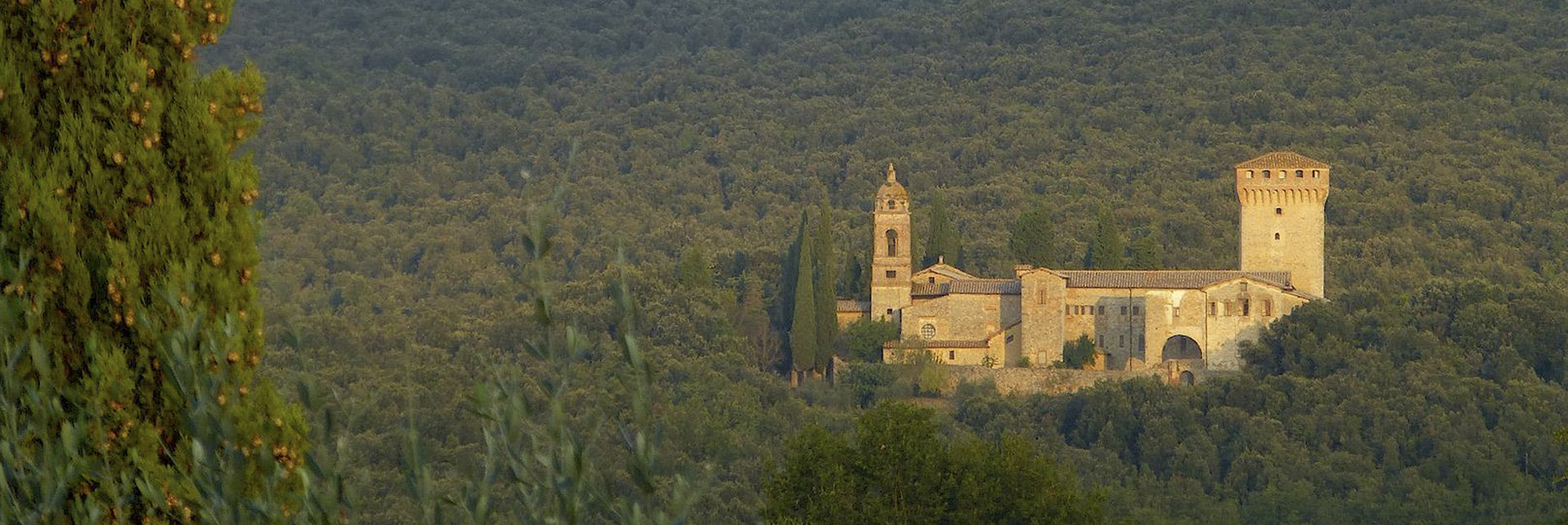Lecceto Walk
Among holm oak and oak woods that create a naturalistic context of rare beauty, this excursion develops with its epicenter in the magnificent and evocative Augustinian hermitage of Lecceto.
Built about eight kilometers far from the center of Siena, it is located within an area called Grillanda. The original name of the hermitage was Foltignano, but already in 1220 it was known as Selva del Lago. It seems that the name Lecceto was officially used for the first time in 1392.
In the church, decorated with frescoes, there is a lunette and painted fragments from the fourteenth Century, as well as traces of fifteenth-Century paintings in the two cloisters.
In the Napoleonic era the hermitage was suppressed and stripped of its works of art. Since 1972 it has been a cloistered monastery for the Augustinian nuns. The route includes (via the path 113 of the Italian Alpine Club Section of Siena) the crossing of
very nice villages, such as Palazzaccio di Toiano, Valli and Caldana.
Once in Pastine di Sotto, along the path 116 it is possible to reach the Hermitage of San Leonardo al Lago, so named due to the presence of a lake that dried up in the eighteenth Century. In 1239 the Hermitage of San Leonardo passed to the Augustinians and in 1250, with a papal bull, it was joined to the nearby and more famous one of San Salvatore di Lecceto.
Crossed areas
The Val di Merse is the breath of the Terre di Siena, it is sap, it is rest, rest. It is Mediterranean and yellow scrub of brooms, bed of rivers, sometimes torrential at times placid, kingdom of wild and free animals.
In the woods, small villages that have stood still in time, that have not allowed modernity. In the green the treasures of water: remains of mills that in the Middle Ages made the economy of this land, thermal waters where centuries of generations and peoples have bathed, places where they have left traces, even in the DNA of the inhabitants, mysterious civilizations like the Etruscan one, small Romanesque churches, ruined castles. Surprising architectures at these latitudes: stately villas and Italian gardens, cloisters of monasteries with oriental charm as illustrations of “the thousand and one nights”, walls of powerful abbeys that, still, in silence, dominate the territory and radiate mysticism, hermitages where legendary knights laid down their weapons and changed their lives leaving traces that appear to us full of symbology.
Expanse of colors that rest the eyes, sounds of water and silence, smell of earth and smell of salt in the breeze that comes from the sea not far away, taste of fruits of the forest.
